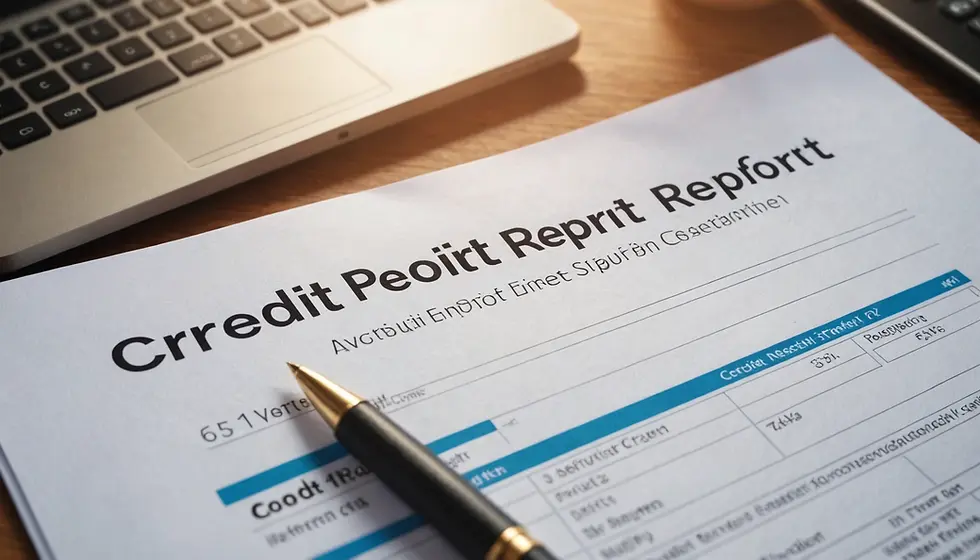Unraveling the Mystery: Understanding Your Credit Score and the Three Major Credit Bureaus
- Sal

- Jan 1
- 4 min read
Understanding your credit score is essential in today's financial landscape. This three-digit number holds significant power over your financial opportunities. It can influence loan approvals, determine interest rates, and even affect job prospects. In this blog post, we will clarify what a credit score is, how it’s calculated, and the critical role of the three major credit bureaus in the credit scoring system.
What is a Credit Score?
A credit score is a number that reflects how likely you are to repay borrowed money. Scores generally range from 300 to 850, with higher scores denoting better creditworthiness. Here's how different factors contribute to your credit score:
Payment History: This is the most significant factor, making up about 35% of your score. For example, consistent on-time payments on a $10,000 personal loan can boost your score, while just one missed payment can lower it by as much as 100 points.
Credit Utilization: This accounts for around 30% of your score and measures the ratio of your total credit card balances to your total credit limits. A good rule of thumb is to maintain a credit utilization rate below 30%. For instance, if your total credit limit across all cards is $15,000, keep balances under $4,500.
Credit History Length: Contributing 15% to your score, this factor assesses how long your credit accounts have been active. A longer history signals stable financial habits. For example, having an average account age of 10 years can positively influence your score compared to a history of only 2 years.
Types of Credit: Making up 10% of your score, a diverse mix of credit types, such as credit cards and auto loans, can indicate responsible management of different debts.
New Credit: This represents 10% of your score. It considers how many recent credit accounts you've opened or how many inquiries have been made. Opening too many new accounts within a short timeframe can decrease your score since it suggests higher risk.

The Importance of Credit Scores
A good credit score is vital for many reasons:
Loan Approvals: In 2021, approx. 90% of lenders used credit scores to make lending decisions. A higher score enhances your chances of securing a loan.
Interest Rates: A study by the Consumer Financial Protection Bureau indicates that individuals with scores above 700 can save up to 1% on their mortgage interest rates, translating to over $100 monthly savings on a $200,000 mortgage.
Rental Applications: Up to 60% of landlords check credit scores. A score of 750 or higher can make your application significantly more appealing.
Employment Opportunities: Research shows that around 50% of employers check credit reports during hiring, especially for financial roles.
Insurance Premiums: Some insurance providers use credit scores to determine risk, with studies indicating that individuals with higher scores can save up to 20% on premiums.

The Three Major Credit Bureaus
The three major credit bureaus—Equifax, Experian, and TransUnion—are crucial in calculating and reporting credit scores. Each bureau compiles credit data slightly differently, so the reports may vary.
1. Equifax
Founded in 1899, Equifax is among the oldest credit bureaus. It collects data from lenders and offers services like credit monitoring and identity protection.
2. Experian
Established in 1980, Experian is recognized for its in-depth reports and scoring systems. Beyond credit reports, they offer tools to help consumers improve scores and protect against identity theft.
3. TransUnion
Founded in 1968, TransUnion is well-known for its data analytics and technology solutions. It provides essential information to consumers, including credit scores and fraud detection services.

How Credit Bureaus Calculate Your Score
Each of the three bureaus has its own method of calculating credit scores, which can sometimes lead to differences in reported scores. They gather information from various financial institutions about your credit history, payment patterns, and relevant details.
When applying for credit, lenders often check scores from all three bureaus. Regularly reviewing your credit reports is wise to catch any errors that could negatively impact your score.
Tips to Improve Your Credit Score
Improving your credit score takes time but can greatly benefit your financial future. Here are strategies to consider:
Pay Bills on Time: Set up reminders or automate payments to ensure you never miss a due date.
Keep Credit Utilization Low: Strive to maintain a utilization rate below 30% for optimal impact.
Review Your Credit Report Regularly: Request a free report once a year from each bureau. Look for errors or outdated info that could lower your score.
Limit New Credit Applications: Only apply for credit when necessary to avoid numerous inquiries.
Diversify Your Credit Types: If feasible, consider adding different types of credit, like an auto loan or a secured credit card.
Your Path to Financial Wellness
A solid understanding of credit scores and the factors affecting them can empower you to improve your financial health. By actively monitoring your credit and implementing smart strategies, you can move toward a brighter financial future. Remember, a better credit score can open doors to lower interest rates, improved loan approvals, and even better job opportunities. Stay informed, keep your credit practices healthy, and watch your financial prospects improve.









Comments